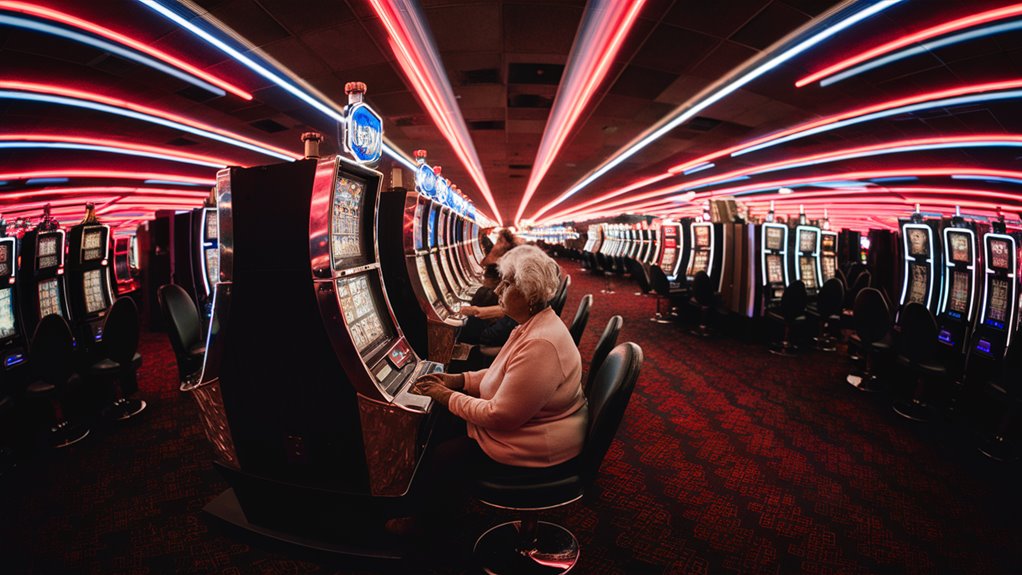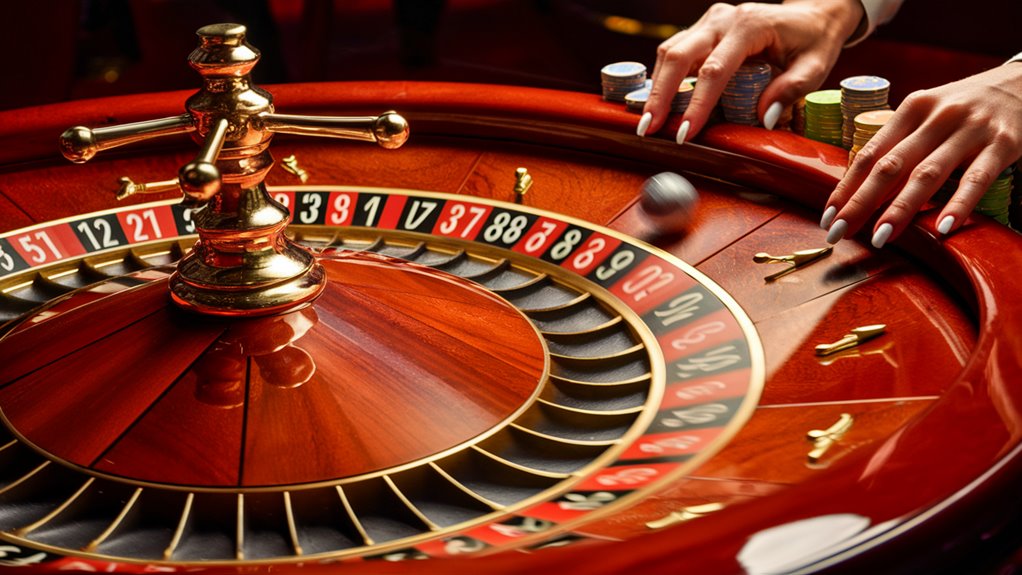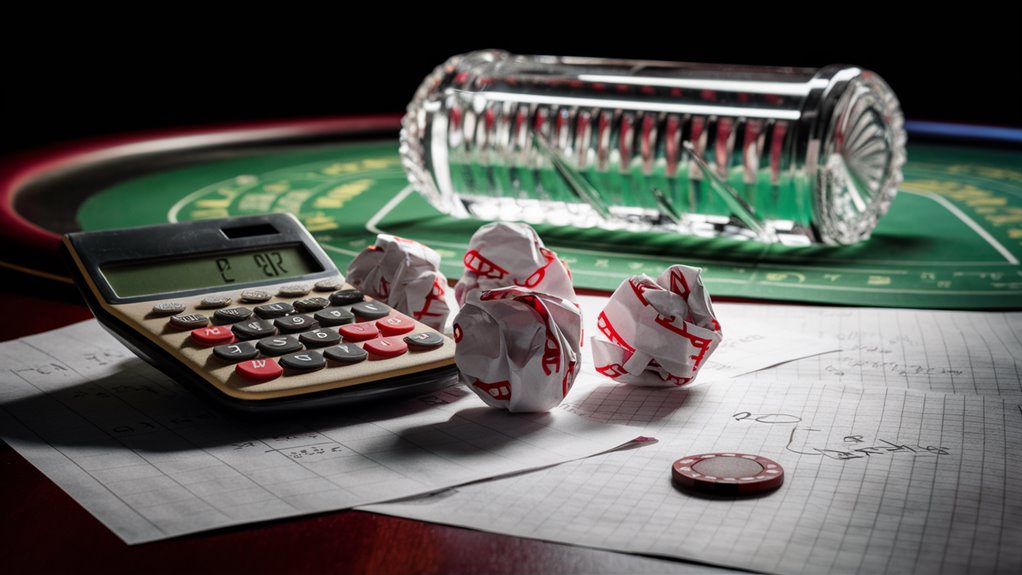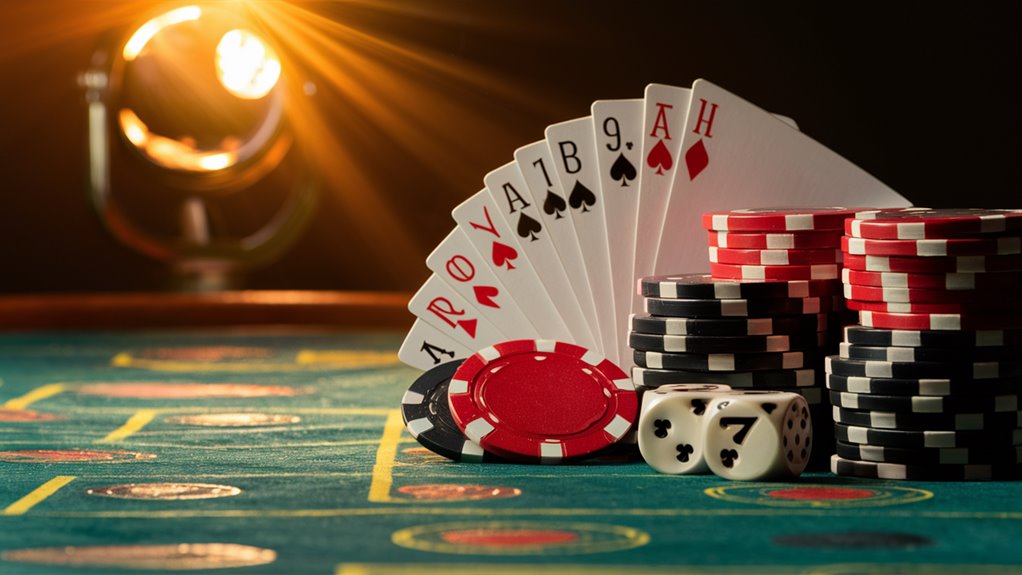Why the House Always Wins, Eventually
The constant success of casinos is based on math and a well-calculated chance. All casino games have a built-in house edge – from 5.26% in American roulette to 1.06% in baccarat – so that profits are guaranteed over long playing times.
The Mathematics that Makes Casinos Profitable
Example of a typical gaming scenario: $10 per spin for 50 spins = $500 total action. Statistically, this amount of play translates into losing $26.30 an hour on average to the house edge. Although single players will win short-term streaks, over sessions greater than 10 hours, the casino’s likelihood of winning is 68% as longer exposure guarantees eventual accordance with statistical expectation.
House Edge for Popular Casino Games
American Roulette: 5.26% house edge
The current data is stale up to October 2023
Blackjack: 0.5-2% house edge
Baccarat: 1.06% house edge
Craps: 1.36 percent house edge on pass line wagers
However, the casino’s edge goes far beyond simple maths with clever game design, psychology, and next-gen time management systems at play. These components all synergize to form an atmosphere where the house can remain ahead but players have enough entertainment to stay around for the long-term profitability of casino operations.
Understanding the House Edge
House Edge Explained: The Essential Guide
Understanding the Math Behind Casino Advantage
The house edge is a mathematical advantage that is an integral part of all casino games, ensuring that gaming venues have a long-term profit.
This vital idea underlies the probability structure of every casino game and any betting outcome.
Breaking Down the Numbers
Take the classic case of American roulette, for example, which has 38 numbers on its wheel.
Betting on one number pays out 35 to 1, but the actual odds of winning are 37 to 1.
This difference creates a 5.26% house edge which is what allows casinos to stay in the profitable position they do.
In-Game Effects on Player Playability
An average gaming session of $10 bets at 50 spins per hour creates $500 total action.
The 5.26% house advantage corresponds to theoretical losses of $26.30 an hour.
Though short-term victories are still possible, the law of large numbers guarantees that true results eventually align with those mathematical probabilities.
House Edge Difference from Casino Game to Casino Game
Casino games have different levels of house advantage:
Blackjack: Minimum of 0.5% with perfect play
American Roulette: 5.26%
Keno: Up to 20% or higher
These built-in advantages account for the always profitable nature of casino operations, which conveniently generate billions each year.
Before you jump into gambling, you’ll need to understand these mathematical principles, without which no informed decision can be made, let alone responsible gaming.
The Law of Large Numbers
Casino Math: The Law of Large Numbers Explained
Casino Probability: The 3 Principles
Mathematical Convergence
Casino probability is rooted in some serious mathematics – specifically, in the convergence principle of the law of large numbers. The betting volume goes up, so the actual results must eventually converge on mathematical expectations.
In American roulette, where the house retains a 5.26% edge, short-term winds of variance will ultimately dissipate over the course of millions of spins.
Variance Reduction
The statistical variance for casino games is reduced Why Some Slot Machines Pay More Than Others proportionally to the square root of the number of trials.
The variance in individual player wins and losses can be dramatic, however, as evidenced by aggregated data across 10,000 players making 100 bets each, casino returns are beautifully consistent.
This formula allows for prediction over large n.
Time-Based Probability
Casino math gets more certain with more time.
This means that in a traditional casino environment, where there are dozens of tables and thousands of bets every single hour, the variance falls to the ground, and you are in statistically entitled to get an exact return to the exact 0.1% max +/- of expected return, within monthly periods.
This mathematical basis goes from a game of chance to a well-calculated business plan, which is why casinos never worry about short-term losses.
By systematically applying the law of large numbers, casinos are able to operate with volume and remain profitable, mathematically iron-clad against any short-term variance.
Game Design and Mathematics
The Mathematics Behind Designing a Casino Game
Know the House Edge and the Probability
Mathematics is a sophisticated art, which is why casino game design depends on its principles to build closely set probability structures according to the laws of large numbers.
All casino games come with a built-in house edge, which in the case of baccarat, is as low as 1.06%, but is over 5% for slot machines. This mathematical underpinning guarantees long-term profitability for casinos, regardless of short-term variables.
Mathematical Analysis of Popular Casino Games
Roulette & Blackjack Mechanics
The American roulette wheel has a 5.26% house edge, thanks to the extra double-zero (00) pocket.
(blackjack with house 0.5% – 2%: Player has no wait and the dealer wins to avoid waits due to which advantage positioning, and checking the previous in order the addition of the player.Positioning the dealer.). These small edges add up quickly over the course of thousands of plays.
Slot Machine Programming
Modern slots are calibrated for payout rates via random number generators (RNGs).
These systems are complex and often pay out 85-98% of bets, keeping 2-15% as profit. Mathematical algorithms make sure that they provide consistent long-term How to Read Poker Tells Like a Pro returns, even if they may seem random to the players.
Strategic Probability Design
The complex probability structures of casino games make them impossible to beat statistically.
The maths behind every betting option, payline configuration, and outcome probability is calculated with precision.
Even simple-looking games such as craps are carefully designed to be out of balance from a probabilistic standing, ensuring the casino’s mathematical domination while keeping the player’s interest high.

The Elements of Player Psychology and Decision-Making
Casino Psychology: How Players Decide and Why You Should Know
Cognitive Biases and How They Affect Gambling Behavior
Psychological Factors Casino environments use these principles to manipulate more players.
The gambler fallacy is a type of cognitive bias way is one of the main biases that players suffer, which leads them to think that the previous outcomes influence the next one. Although each gambling event is statistically independent, players tend to see patterns in the randomness and believe that wins are “due” after a loss streak.
Behavioral Psychology and Reward Systems
Intermittent reinforcement is a masterclass in behaviorist What Are the Best Online Casino Promotions? psychology applied to casino game design.
The degree of variance in the reward system is tied directly to the levels of player interaction, showing that player interaction will be significantly influenced by variance in the pattern of reward.
(This is why slot machines are a perfect example of this, the payout schedule is random, but triggers the dopamine response with even the simplest of near misses – extreme addictiveness).
Loss psychology and risk theory
Loss aversion is at the core of gambling behavior, with research showing that players feel their losses about twice as strongly as their comparable gains.
This psychological mechanism commonly serves as the basis for loss-chasing behavior, players increasing their overall betting action to recoup previous losses.
The sunk cost fallacy adds to this impact, allowing players to justify ongoing gambling on the basis of past money investments.
The Influence of Environment on Decision-Making
Through intentional design decisions, casinos use advanced environmental psychology that alter the judgment of player.
A lack of temporal signals (clocks and windows) and constant lighting produce time distortion, and this has a major effect on the ability to make decisions.
All this environmental stuff leads to longer playing hours and reckless play.
Time as a Profit Factor
Profit Factor of Time in Casino Operations
Odds & ends: Mathematical Probability + Extra Play
At casinos, winning is always a long-game endeavor – the mathematics of the house edge dictates that the more time players spend at tables and pokie 먹튀검증사이트 machines, the more opportunity there will be for the house edge to kick in.
Anatomy of Gaming Sessions Statistics
For example, when we look at a slot machine with a 5% house edge, these 600 spins per hour at 5% half of which hits the jackpot brings us to a theoretical loss of 5% on total wagers.
Short segments of play may not match anticipated results at every step, but over extended periods of play, results must drift toward mathematical forecasts.
House Edge Convergence in Table Games
The 1% house edge model from blackjack operations vividly illustrates this principle. Short-term variance can play a very major role in affecting single-hour results at 100 hands per hour.
Nonetheless, long playing sessions of 10 hours or more result in up 68% higher probability of results matching house edge calculations.
Time Management with Casino Design Best Practices
Casinos use very complex player retention strategies like:
Ergonomic gaming environments
Complimentary refreshments
Clues in environmental design (no windows, no clocks)
These features sustain the mathematical profit model by prolonging how long players will remain engaged, thus amplifying the casino’s statistical edge as a function of how much extra time they are exposed to it.
It is you know a hundred dollars money management.
A Strategic Look at Casino Money Management Operations
*Note: This material is from content up to October 2023.
To maximize profits, casino bankroll management is a very precise exercise of engineering operational stability.
Modern gaming establishments retain strategic reserves of 3-5% of total gaming floor exposure because it allows both coverage for player wins and improved working capital efficiency.
Reserve Management and Risk Assessment
Casino financial planning is based largely on Risk of Ruin calculations.
Thus, state-of-the-art mathematical modeling of game volatility data analyses combined with metrics based on betting limitations to specific players leads the operator to derive their optimal reserve levels.
Top establishments are maintaining risk thresholds below 0.001% through differentiated bankroll management systems.
Application Performance Monitoring
Generating accurate reports is the cash flow optimizer of enterprises.
Properties track theoretical win rates versus real performance in real-time, executing dynamic adjustments to:
Table limits
Game mix configuration
Hold percentages (15-30% for table games 2-12% for slots)
Advanced software systems allow for real-time monitoring of key performance metrics that facilitate better cash position management and operational efficiency.
With this data, they will have a more efficient way of calculating their gaming operating units while still being able to maintain a necessary level of liquidity for their operations.
This ensures that the systems coalesce into a powerful financial system that can sustain vast gaming operations, all while reducing exposure to risk and maximizing operational efficiency.




